
My recent reprinting of Boxoffice Magazine’s annual short subject issue for 1964-65 proved so popular, I think I’ll feature these on a semi-regular basis. This week I’ve decided to take a look at the 1961-62 season (Boxoffice issue dated November 27th, 1961). That was the year MGM released the Gene Deitch Tom & Jerry’s, Loopy DeLoop was riding high at Columbia and Paramount made a new animated “two-reeler”, sort-of.
Warner Bros. was so close to closing their cartoon studio – and the Looney Tunes were now so well established on network TV – that the studio didn’t even take out ads to promote the new shorts they would be distributing. Their cartoons that year – which included Chuck Jones’ Nelly’s Folly in late ’61 and Jones’ Louvre Come Back To Me and Freleng’s Honey’s Money in ’62 – were probably the best Hollywood shorts released that year.
Click the thumbnails below to enlarge and read. What a cover on this issue, huh? With Loopy DeLoop, Deitch’s Tom & Jerry and Munro, and an awful stock shot of Woody Woodpecker. A real appealing bunch.
Note the story on Abner The Baseball – with a great publicity image by Irv Spector (I’d love to find an original glossy still of that). I have an original Paramount print of Abner and it’s a full twelve minutes or so (a TV titled version is embed for your enjoyment, below), nowhere near the length of a traditional “two-reeler” – but that’s how they are advertising it. I guess its almost double the length of an average six minute Modern Madcap, so I suppose that gives them some bragging rights. The story goes that Seymour Kneitel was a huge fan of Eddie Lawrence’s recorded routines and invited him in to adapt this bit. That led to Lawrence adapting several other of his established comedy skits and characters for Paramount Cartoon Studios the next few years, culminating with his Swifty and Shorty series. The best way to enjoy these is to just shut your eyes and listen to Eddie’s monologues. He’s terrific.
The MGM piece makes the most of Snyder and Deitch’s Academy Award for Munro, as does Paramount’s article (which classifies Munro as a “Noveltoon“). I’ve embed it below along with one of their Tom & Jerry cartoons from ’62 for comparison. On the next page Terrytoons promotes the fact that they’ve entered a few cartoons in foreign film festivals – and won awards! For Hector Heathcoate!
On the following page, note the blurb about Larry Harmon preparing two-reel theatrical Laurel and Hardy cartoons. Thank the Lord these never came to pass. On the same page a classy Terrytoons half-page advertisement.



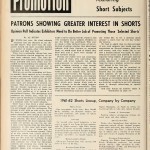
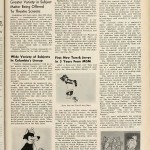

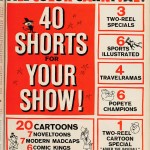



 Jerry Beck is a writer, animation producer, college professor and author of more than 15 books on animation history. He is a former studio exec with Nickelodeon Movies and Disney, and has written for The Hollywood Reporter and Variety. He has curated cartoons for DVD and Blu-ray compilations and has lent his expertise to dozens of bonus documentaries and audio commentaries on such. Beck is currently on the faculty of CalArts in Valencia, UCLA in Westwood and Woodbury University in Burbank – teaching animation history. More about Jerry Beck [
Jerry Beck is a writer, animation producer, college professor and author of more than 15 books on animation history. He is a former studio exec with Nickelodeon Movies and Disney, and has written for The Hollywood Reporter and Variety. He has curated cartoons for DVD and Blu-ray compilations and has lent his expertise to dozens of bonus documentaries and audio commentaries on such. Beck is currently on the faculty of CalArts in Valencia, UCLA in Westwood and Woodbury University in Burbank – teaching animation history. More about Jerry Beck [



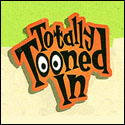



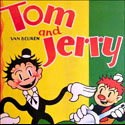
Story-wise, the Eddie Lawrence-Irv Spector Paramount cartoons from the 1960-63 period really aren’t that bad. They just have a bad reputation because the studio’s animation budgets by the were at the Loopy de Loop level, and most of the studio’s other (usually more child-oriented) efforts were a real struggle to get through.(also, too bad the first few Lawrence-Spector Swifty & Shorty — nee, Ralph & Percy — cartoons from ’62 didn’t make it in full onto the Harveytoons discs. Unlike the later entries, the fast dialogue here really is funny).
Also, looking at the publicity still they used for Tom & Jerry, it’s hard to fathom how MGM thought this would be a good visual to sell exhibitors on the series. Its also interesting that the MGM blurb promotes Paramount’s Deitch cartoon better than Paramount’s press release does.
(also, too bad the first few Lawrence-Spector Swifty & Shorty — nee, Ralph & Percy — cartoons from ’62 didn’t make it in full onto the Harveytoons discs. Unlike the later entries, the fast dialogue here really is funny).
I noticed one cartoon in particular from ’62, “Penny Pals” appears not to be in the Harveytoons stash as it stayed with Paramount anyway. I really love that short myself for the same reasons stated.
Also, looking at the publicity still they used for Tom & Jerry, it’s hard to fathom how MGM thought this would be a good visual to sell exhibitors on the series. Its also interesting that the MGM blurb promotes Paramount’s Deitch cartoon better than Paramount’s press release does.
No doubt the Oscar-winning Munro probably had a lot to do with wanting to promote Deitch’s involvement with the T&J series.
One of my all-time favorites from this theatrical era is Paramount’s “The Plot Sickens”. That one with its’ black comedy about a meek man who attempts to murder his shrewish wife is played out to perfection and it’s easily one of the studio’s all-time greatest cartoons, IMO. Irv Spector really knew how to make ’em great when he wanted to.
I get the feeling I’m in the minority, but I rather like the Loopy de Loop cartoons; the dozen or so that I’ve seen were pretty entertaining, if not on the level of the best HB TV cartoons, and I find the character himself appealing.
You’re not alone. I suspect that had LOOPY been a segment on one of the regular H-B series, nobody would be as hard on it as they have been simply because it had the temerity to be a theatrical series. (Our little group of H-B afficianados have conjectured that a PIXIE & DIXIE & MR. JINKS SHOW might have been the plan for the fall ’63 season (no new H-B seires debuted that year), with the LOOPY cartoons, and a third segment transferred over from either the HUCK or YOGI show (HOKEY WOLF or SNAGGLEPUSS), with new episodes of either a BIGELOW MOUSE series or MR. & MRS. J. EVIL SCIENTIST taking their place on the original series, but perhaps Kellogg’s nixed it. Eventually, Ideal’s MAGILLA GORILLA SHOW popped up in January of ’64 instead.) LOOPY is interesting since it lasted six years instead of the three or four YOGI BEAR (HB’s longest running segment to that point, save FLINTSTONES) did, so stretched over all the various H-B crews and styles in terms of art, story, music and supporting voice talent.
It does appear that Universal and Columbia were releasing the most shorts (overall) at this time. The major “production teams” in live-action entertainment (i.e. Three Stooges, Joe McDoakes) were all gone before 1958, but Harry Foster had a last big crop of travelogues for Columbia, augmented by an increasing number of independent festival favorites from the National Film Board of Canada and elsewhere that the studio was distributing state-wise. Universal still made some rather high quality “human interest” one and two reelers (which may still be fun to see today if they had any interest in checking their vaults) straight through the spring of 1972 (and this was another reason Lantz probably felt it was The Time) in addition to their newsreel lasting through 1967. WE may view a late sixties Chilly Willy as awful, but remember that cartoon was sandwiched between other things and probably didn’t appear quite as bad on screen with a travelogue accompanying it as it does on a TV show strictly of Woodys and Chillys.
For the Buena Vista release plans, it said there were three Donald Duck cartoons, but only two were released (“Donald and the Wheel” and “The Litterbug”).